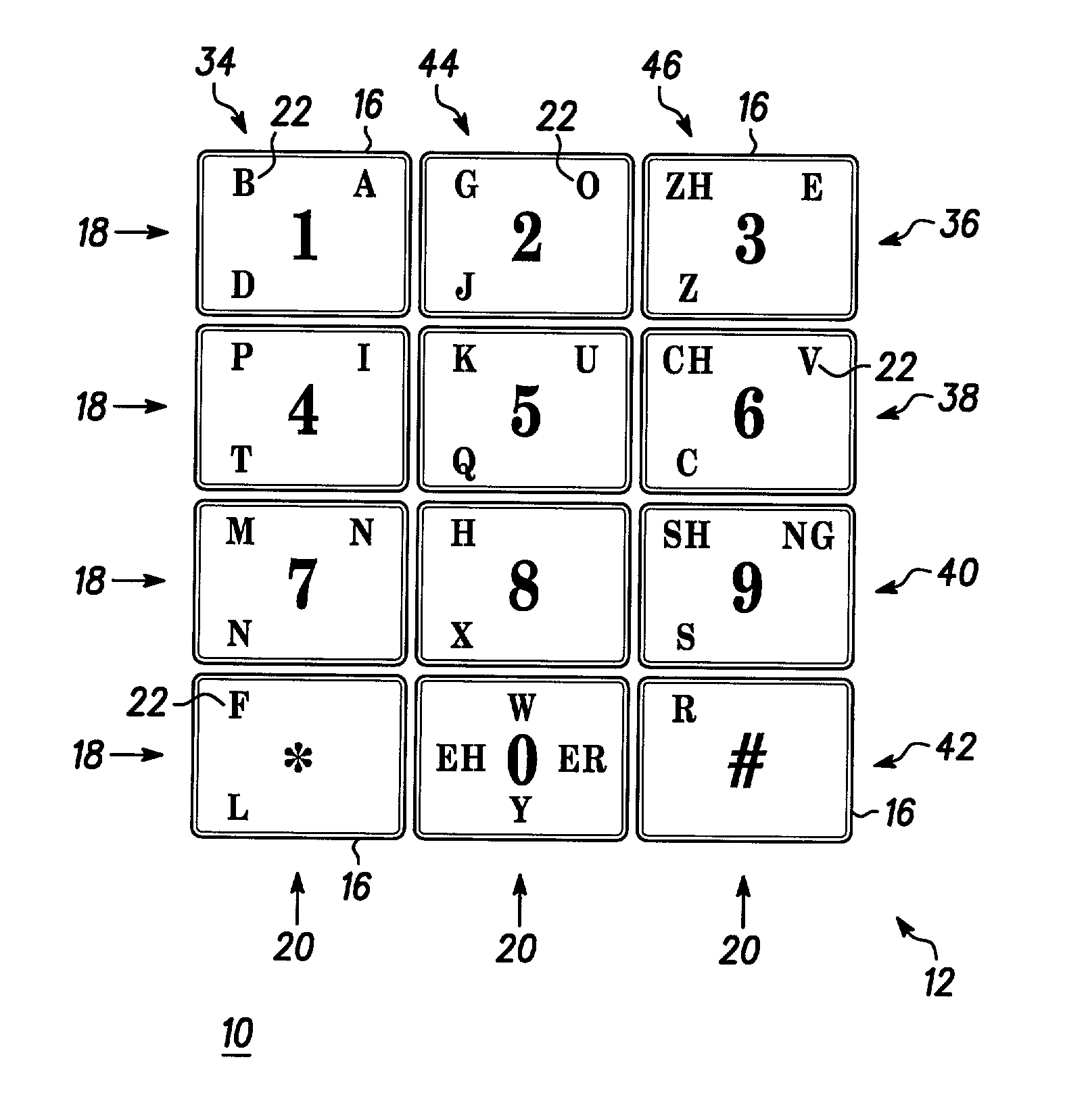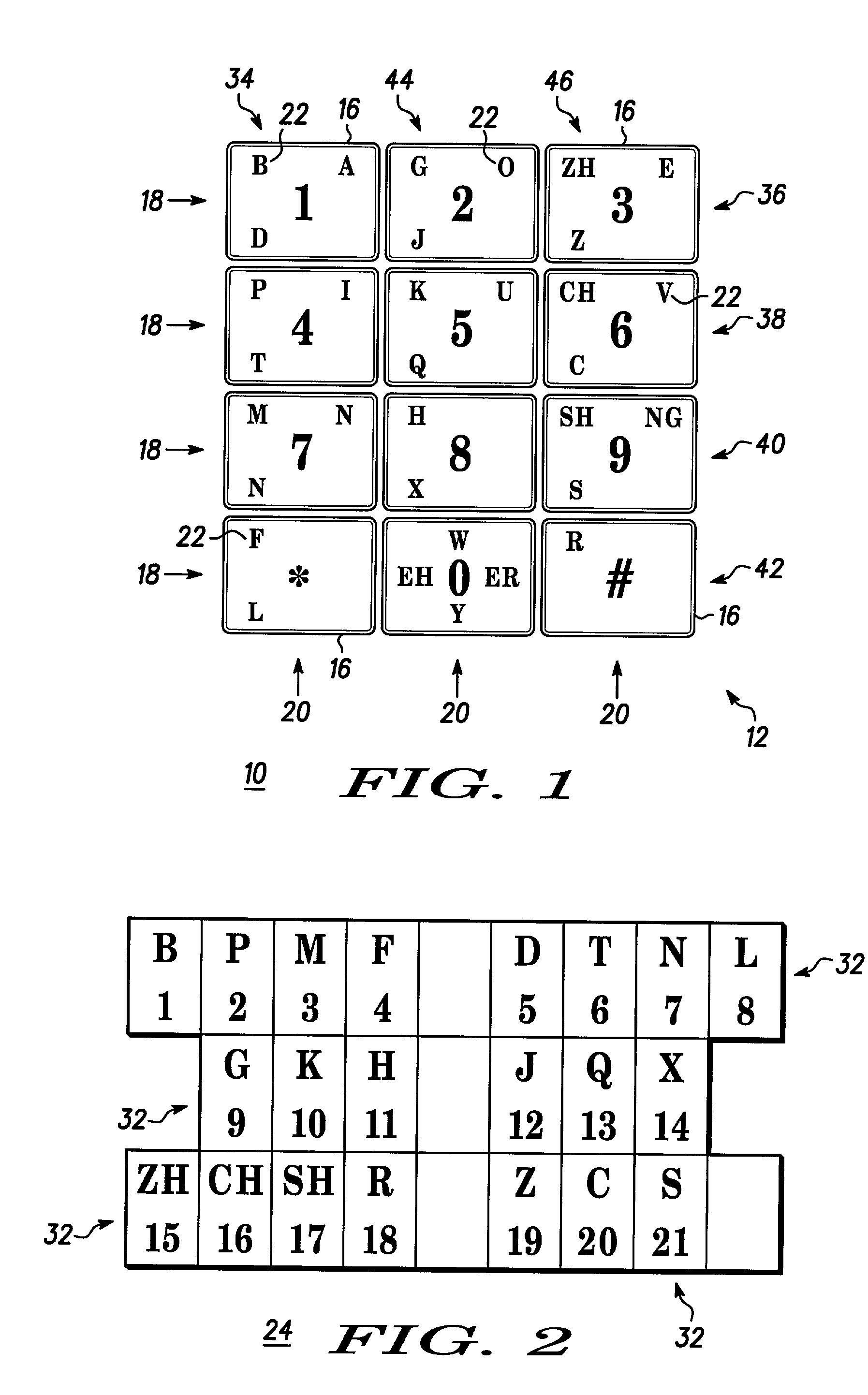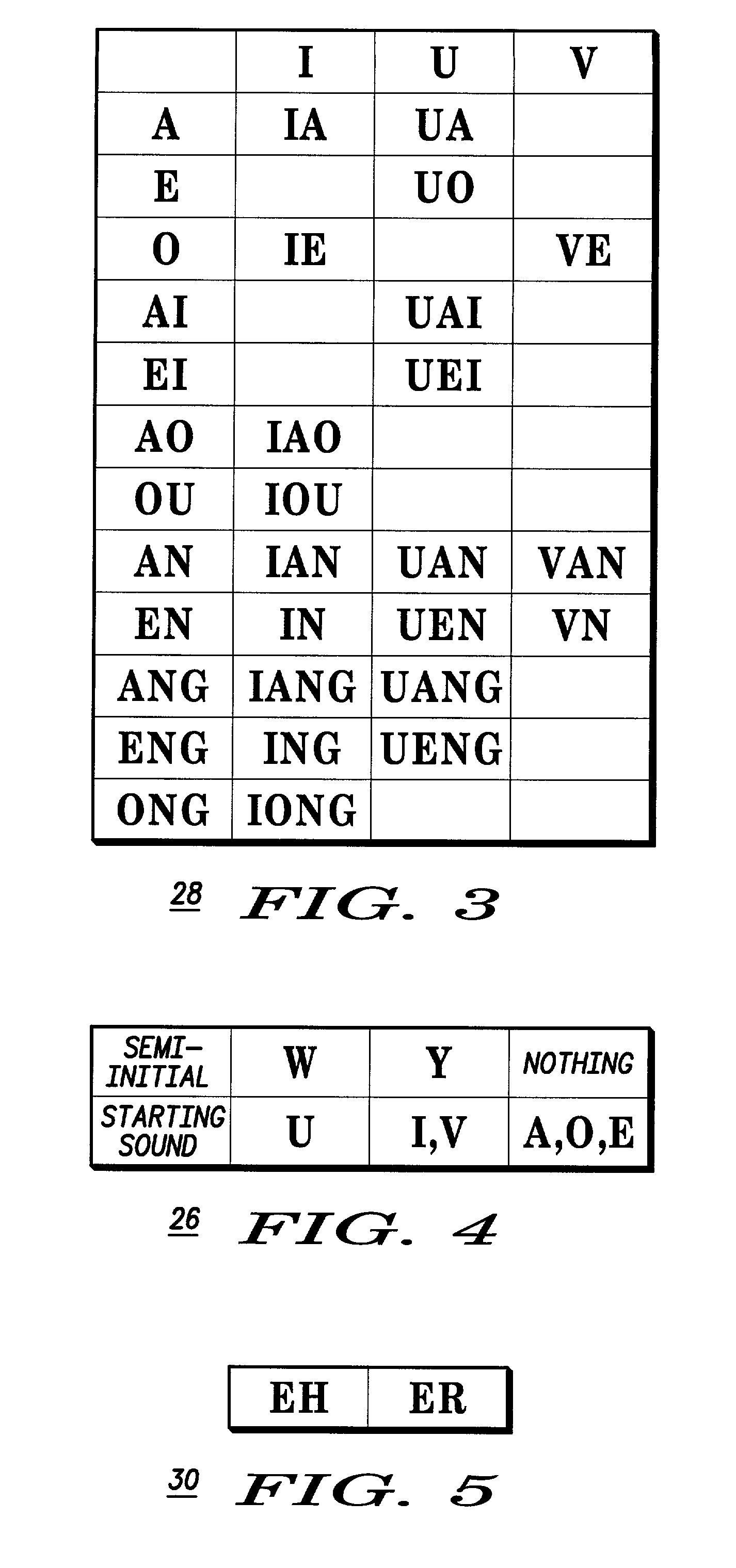Keypad layout for alphabetic symbol input
- Summary
- Abstract
- Description
- Claims
- Application Information
AI Technical Summary
Benefits of technology
Problems solved by technology
Method used
Image
Examples
Embodiment Construction
[0033]The present layout generally designated 10 for the keypad 12 of FIG. 1 is optimized in terms of both its regularity and efficiency over the prior ABC keypad layout described earlier. In this regard, the keypad layout 10 herein is specifically described for use with the Chinese phonetic alphabet, Pinyin, although it will be recognized that the principles adopted by the keypad layout 10 can also be adapted for use with other types of syllabic based, highly structured languages with alphabets having symbol groupings, as described more fully hereinafter. The present keypad layout finds particular utility on keypads 12 of small hand-held, electronic data entry devices 14 of FIG. 23 such as cellular phones, PDAs, etc. where the number of keys available for alphanumeric input is limited, e.g. 9 to 12 alphanumeric keys.
[0034]The keypad layout 10 has a predetermined arrangement of the symbols of one of the groups thereof that is based on a columnar or vertical top down approach rather ...
PUM
 Login to View More
Login to View More Abstract
Description
Claims
Application Information
 Login to View More
Login to View More - R&D
- Intellectual Property
- Life Sciences
- Materials
- Tech Scout
- Unparalleled Data Quality
- Higher Quality Content
- 60% Fewer Hallucinations
Browse by: Latest US Patents, China's latest patents, Technical Efficacy Thesaurus, Application Domain, Technology Topic, Popular Technical Reports.
© 2025 PatSnap. All rights reserved.Legal|Privacy policy|Modern Slavery Act Transparency Statement|Sitemap|About US| Contact US: help@patsnap.com



